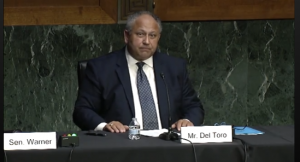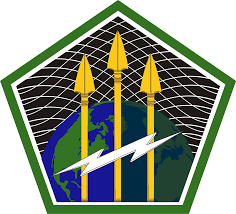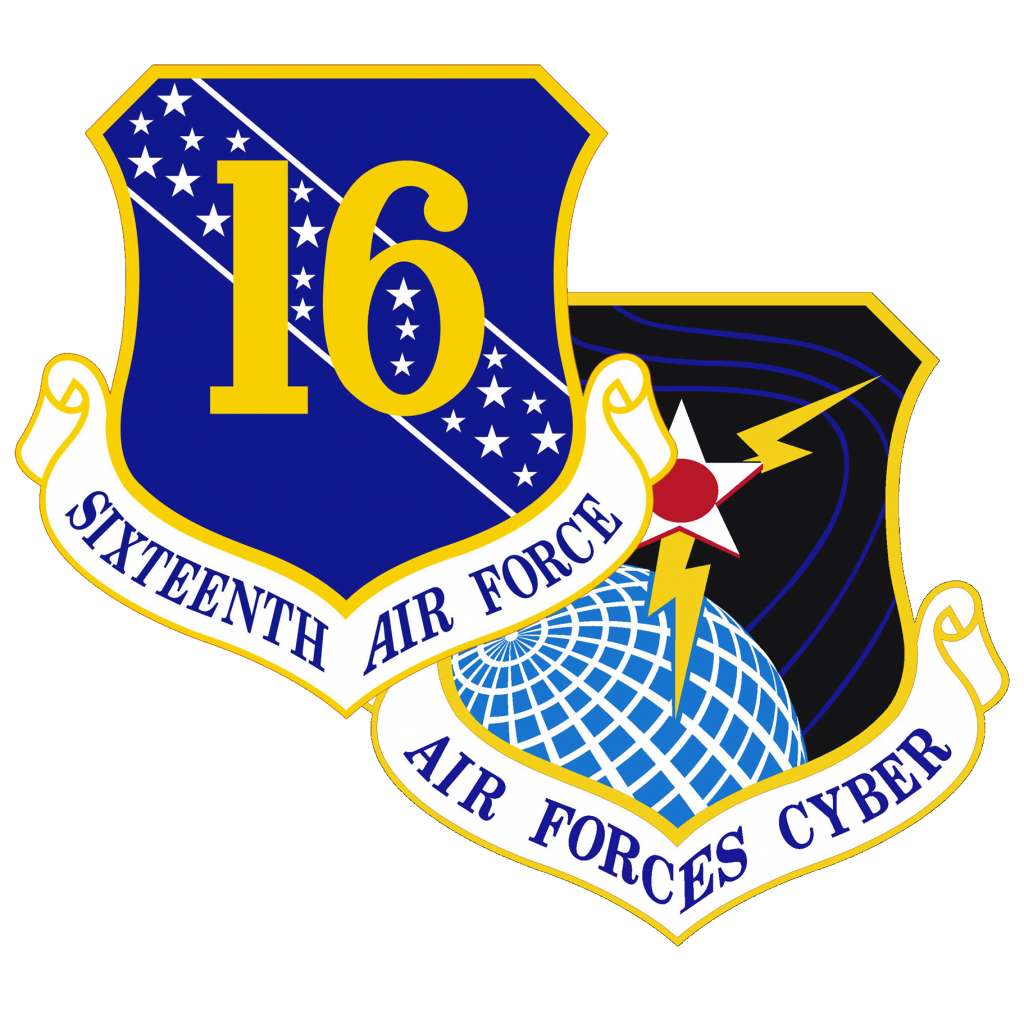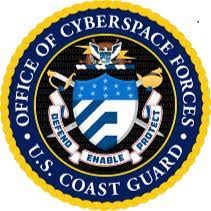
Keywords: Information Operations, Information Warfare, Cyber Warfare
Definitions
Cyberspace — A global domain within the information environment consisting of the interdependent networks of information technology infrastructures and resident data, including the Internet, telecommunications networks, computer systems, and embedded processors and controllers. (JP 3-12)
Cyberspace Attack — Actions taken in cyberspace that create noticeable denial effects (i.e., degradation, disruption, or destruction) in cyberspace or manipulation that leads to denial that appears in a physical domain, and is considered a form of fires. (JP 3-12)
Cyberspace Capability — A device or computer program, including any combination of software, firmware, or hardware, designed to create an effect in or through cyberspace. (JP 3-12)
Cyberspace Defense — Actions taken within protected cyberspace to defeat specific threats that have breached or are threatening to breach cyberspace security measures and include actions to detect, characterize, counter, and mitigate threats, including malware or the unauthorized activities of users, and to restore the system to a secure configuration. (JP 3-12)
Cyberspace Exploitation — Actions taken in cyberspace to gain intelligence, maneuver, collect information, or perform other enabling actions required to prepare for future military operations. (JP 3-12)
Cyberspace Operations — The employment of cyberspace capabilities where the primary purpose is to achieve objectives in or through cyberspace. Also called CO. (JP 3-0)
Cyberspace Security — Actions taken within protected cyberspace to prevent unauthorized access to, exploitation of, or damage to computers, electronic communications systems, and other information technology, including platform information technology, as well as the information contained therein, to ensure its availability, integrity, authentication, confidentiality, and nonrepudiation. (JP 3-12)
Cyberspace Superiority — The degree of dominance in cyberspace by one force that permits the secure, reliable conduct of operations by that force and its related land, air, maritime, and space forces at a given time and place without prohibitive interference. (JP 3-12)
Defensive Cyberspace Operations — Missions to preserve the ability to utilize blue cyberspace capabilities and protect data, networks, cyberspace-enabled devices, and other designated systems by defeating on-going or imminent malicious cyberspace activity. Also called DCO. (JP 3-12)
Defensive Cyberspace Operations-Internal Defensive Measures — Operations in which authorized defense actions occur within the defended portion of cyberspace. Also called DCO-IDM. (JP 3-12)
Defensive Cyberspace Operations-Response Actions — Operations that are part of a defensive cyberspace operations mission that are taken external to the defended network or portion of cyberspace without the permission of the owner of the affected system. Also called DCO-RA. (JP 3-12)
Department of Defense Information Network Operations — Operations to secure, configure, operate, extend, maintain, and sustain Department of Defense cyberspace to create and preserve the confidentiality, availability, and integrity of the Department of Defense information network. Also called DODIN operations. (JP 3-12)
Directive Authority for Cyberspace Operations — The authority to issue orders and directives to all Department of Defense components to execute global Department of Defense information network operations and defensive cyberspace operations internal defensive measures. Also called DACO. (JP 3-12)
Full-Spectrum Superiority — The cumulative effect of dominance in the air, land, maritime, and space domains; electromagnetic spectrum; and information environment (which includes cyberspace) that permits the conduct of joint operations without effective opposition or prohibitive interference. (JP 3-0)
Offensive Cyberspace Operations — Missions intended to project power in and through cyberspace. Also called OCO. (JP 3-12)
Information Operations — The integrated employment, during military operations, of information-related capabilities in concert with other lines of operation to influence, disrupt, corrupt, or usurp the decision-making of adversaries and potential adversaries while protecting our own. Also called IO. (JP 3-13)
Information Operations Force — A force consisting of units, staff elements, individual military professionals in the Active and Reserve Components, and DOD civilian employees who conduct or directly support the integration of information-related capabilities against adversaries and potential adversaries during military operations as well as those who train these professionals. Also called IO force. (DODD 3600.01)
Information Operations Intelligence Integration — The integration of intelligence disciplines and analytic methods to characterize and forecast, identify vulnerabilities, determine effects, and assess the information environment. Also called IOII. (JP 3-13)
Information-Related Capability — A tool, technique, or activity employed within a dimension of the information environment that can be used to create effects and operationally desirable conditions. Also called IRC. (JP 3-13)
Key Documents
- NATO Standard AJP-3.20 Allied Joint Doctrine for Cyberspace Operations Edition A Version 1, January 2020, © NATO/OTAN. AJP-3.20, Allied Joint Doctrine for Cyberspace Operations, is the NATO doctrine to plan, execute and assess cyberspace operations (CO) in the context of Allied joint operations. AJP-3.20 is a part of NATO’s operations architecture and derives its authority from and complements AJP-3, Allied Joint Doctrine for the Conduct of Operations.
- Joint Concept for Operating in the Information Environment (JCOIE), DOD July 2018. In recognition of the increasing impact of activities in the information environment, the Chairman of the Joint Chiefs of Staff felt the role of information was so critical that he issued an out-of-cycle change to Joint Publication 1, Doctrine of the Armed Forces of the United States, introducing “Information” as the seventh Joint Function. Independent of the form of warfare, the Joint Concept for Operating in the Information Environment (JCOIE) addresses the role of information and focuses on how information can change or maintain the drivers of behavior.
- JP 3-12, Cyberspace Operations, DoD June 2018. This publication provides joint doctrine to plan, execute, and assess cyberspace operations.
- DoD Strategy for Operations in the Information Environment, DoD, June 2016. This strategy describes how the Department will set conditions to achieve an advantage in the IE with particular emphasis on the tasks associated with four key lines of effort: people, programs, policies, and partnerships.
- JP 3-13, Information Operations, DoD November 2012 Incorporating Change 1, November 2014 This publication provides joint doctrine for the planning, preparation, execution, and assessment of information operations across the range of military operations.
- Department of Defense Directive 3600.01, Information Operations, DoD May 2, 2013. This directive reissues DoD Directive 3600.01 and, pursuant to the authority and guidance in Secretary of Defense Memorandum ( updates established policy and assigned responsibilities for IO. b. Updates IO definitions. c. Directs the establishment of the Information Operations Executive Steering Group (IO ESG).
Other documents
- CRS Defense Primer: Information Operations, Congressional Research Service, updated December 2020. This document was prepared by the Congressional Research Service (CRS). CRS serves as nonpartisan shared staff to congressional committees and Members of Congress.
- Information Operations Primer – Fundamentals of Information Operations AY12 Edition, U.S. Army War College, November 2011 AY12 Edition. This latest revision of the Information Operations Primer provides an overview of Department of Defense (DoD) Information Operations (IO) doctrine and organizations at the joint and individual service levels. It is primarily intended to serve students and staff of the U.S. Army War College as a ready reference for IO information extracted and summarized from a variety of sources. Previous editions: AY11 Edition 2010 and AY09 Edition 2008.
Latest Post

Iranian Hackers Pose as UK Scholars to Target Experts
By Masood Farivar, VOA WASHINGTON – A notorious group of hackers tied to Iran’s Islamic Revolutionary Guard Corps has waged a covert campaign targeting university professors and other experts based

Mr. Carlos Del Toro, Nominee to be Secretary of the Navy, on Cyber at the Senate Armed Services Committee
Senate Armed Services CommitteeAdvance Policy Questions for Mr. Carlos Del ToroNominee to be Secretary of the Navy… Cyber and Electronic WarfareSection 1657 of the FY 2020 National Defense Authorization Act

Cyber Warriors: Guam Guard participates in Exercise Orient Shield
By Mark Scott, Guam National Guard DEDEDO, Guam – One Sergeant, three Specialists, and a Senior Airman in a room with a few laptops might not look like much. But

Cyber Shield enhances partnerships as cyber threats continue
By Master Sgt. Erich B. Smith, National Guard Bureau ARLINGTON, Va. – The National Guard plays a critical role in defending computer networks and mitigating cyber-attacks that occur almost daily,
External Links
- U.S. Cyber Command, the Commander, USCYBERCOM, has the mission to direct, synchronize, and coordinate cyberspace planning and operations to defend and advance national interests in collaboration with domestic and international partners.
- U.S. Army Cyber Command integrates and conducts cyberspace, electronic warfare, and information operations, ensuring decision dominance and freedom of action for friendly forces in and through the cyber domain and the information environment, while denying the same to our adversaries.
- The Sixteenth Air Force (Air Forces Cyber), headquartered at Joint Base San Antonio-Lackland, Texas, is the first-of-its-kind Numbered Air Force. Also known as the Air Force’s Information Warfare Numbered Air Force, the 16th integrates multisource intelligence, surveillance, and reconnaissance, cyber warfare, electronic warfare, and information operations capabilities across the conflict continuum to ensure that our Air Force is fast, lethal and fully integrated in both competition and in war. Sixteenth Air Force (Air Forces Cyber) provides mission integration of IW at operational and tactical levels… recognizing the role of information in creating dilemmas for adversaries in competition and, if necessary, future conflicts.
- U.S. Fleet Cyber Command (FCC)/U.S. TENTH Fleet (C10F) reports directly to the Chief of Naval Operations as an Echelon II command and is responsible for Navy information network operations, offensive and defensive cyberspace operations, space operations and signals intelligence. As such, U.S. Fleet Cyber Command serves as the Navy component command to U.S. Cyber Command, the Navy space component to U.S. Strategic Command, and the Navy’s Service Cryptologic Component Commander under the National Security Agency/Central Security Service. U.S. TENTH Fleet is the operational arm of Fleet Cyber Command and executes its mission through a task force structure similar to other warfare commanders.
- U.S. Marine Corps Forces Cyberspace Command To conduct full spectrum cyberspace operations, to include operating and defending the Marine Corps Enterprise Network (MCEN), conducting defensive cyberspace operations within the MCEN and Joint Force networks, and when directed, conducting offensive cyberspace operations in support of Joint and Coalition Forces; in order to enable freedom of action across all warfighting domains, and deny the same to adversaries.
- U.S. Coast Guard Office of Cyberspace Forces (CG-791), mission: obtain Cyberspace capabilities, competencies, and capacity to meet operational requirements





